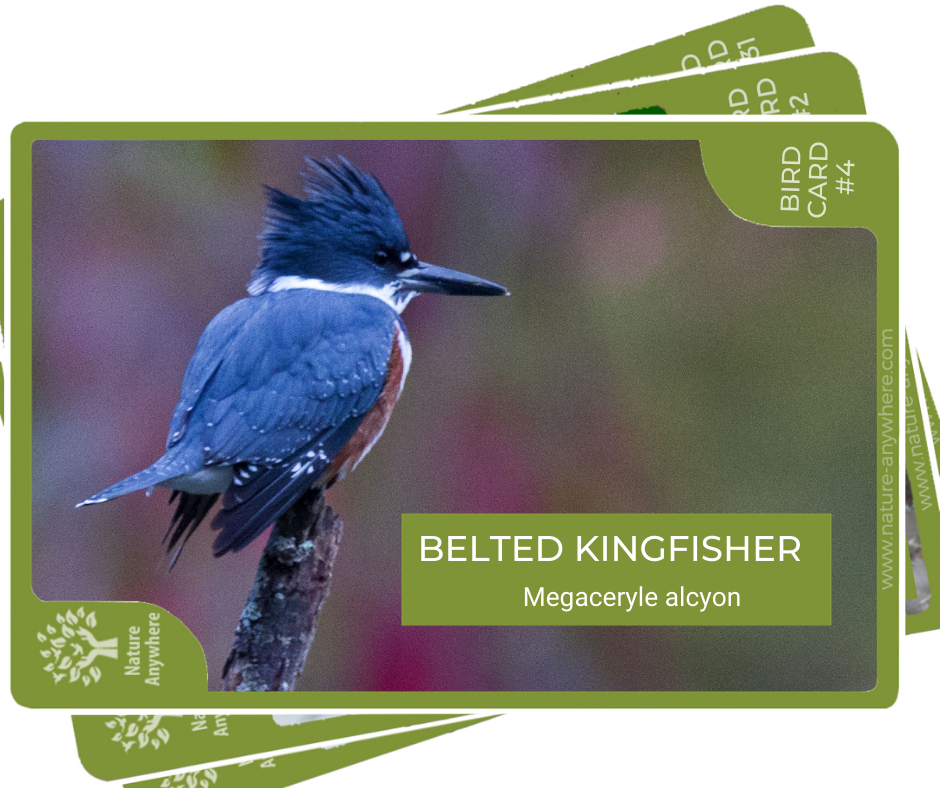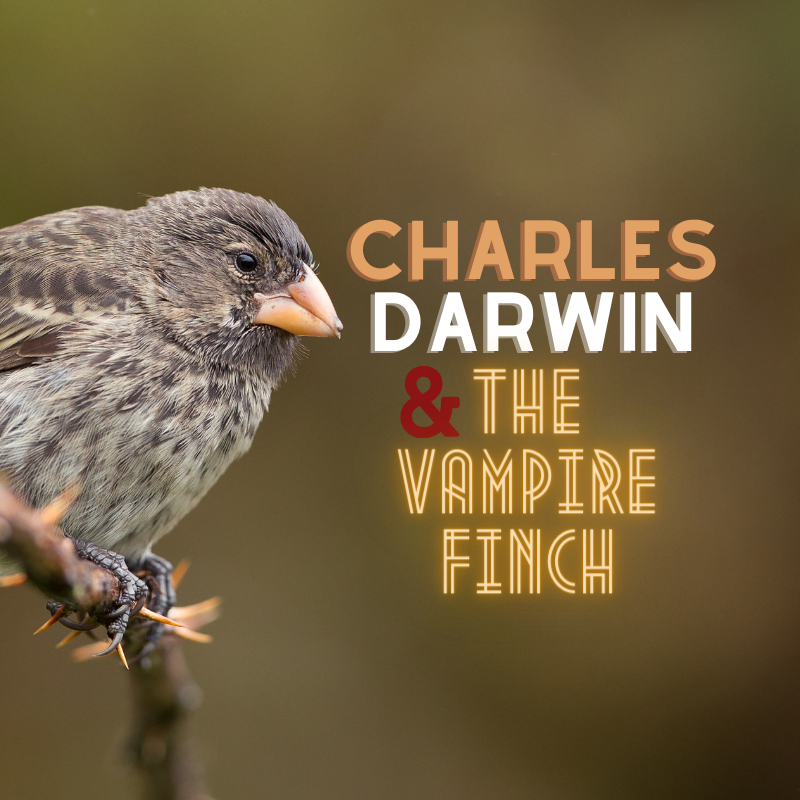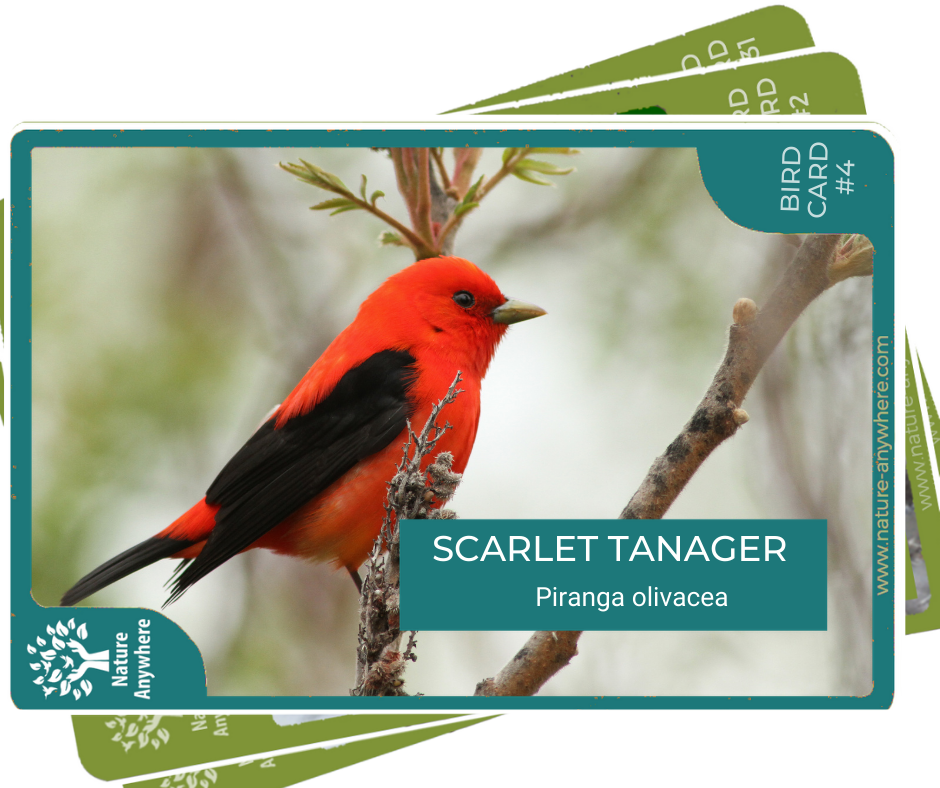
You will often hear the belted kingfisher’s wild cackle before you see him, as he soars over rivers and lakes. If not perched on a tree or beating his wings rapidly as he flies, you will see him in his iconic position: diving into the water to nab a fish.
There are so many pictures of belted kingfishers but they are hard to catch on camera as they are very shy. If you hear or see one, try to stay unseen to get your shot before the bird takes wing.
There are four types of kingfisher in North America: the Ringed Kingfisher, the Green Kingfisher, the Amazon Kingfisher, all living and breeding in the southern parts of the US. But the Belted Kingfisher is the only one seen north of the southern border and throughout the whole of north America - excluding the northern tundra areas.
Belted kingfishers are non-migratory and diurnal, i.e. active during the day.They establish a territory and usually stay inside it. With claws shaped for digging, kingfishers make nests in wetlands, in the walls of ponds, lakes and river banks. They breed at elevations of up to 9,000 feet. Come winter, they vary their territories to mangrove swamps and and brackish lagoons.

They fly up and down the shoreline within their territory, usually around rivers and lakes, as fish is their main source of food. They can also be seen along the roadsides where they perch up high to look for food. Belted kingfishers choose areas with as few trees as possible since the roots can interfere with the burrowing of nesting spots. Also, they need exposed banks for shelter and nesting.
If threatened by a predator, human or another bird, they are will not be intimidated and in fact will pursue the intruder with bellowing calls.
LOOKS

Belted kingfishers are about 12.5 inches on average and weigh about 5.5 ozs, about the size of a baseball or a medium sized apple. This is a weight not to be ashamed of, as they are much heavier than the average songbird.
They have grey-blue heads and bodies but the most distinctive characteristic is the large head, larger than any bird of the same size. Between the red-brown eyes and long, thick tapering bill is a white dot. Contrasting this deep blue, a white collar circles the neck and another dark band surrounds the back.
In contrast to their large heads, their wings are relatively small. They have long flat toes with a sharp pointed claw at the end with which they dig nests in the sides of riverbanks.
A rare fact: the female belted kingfisher is unusual in that she is surprisingly more colorful than the male. While the males have a white underbelly, the females have a reddish-brown band with white patches on their primary wings, which are also slate-blue.
EATS

Belted kingfishers are carnivorous, eating small fish, insects, frogs, and crayfish when fish aren’t available. They hunt in any source of clear water from lake to sea.
They perch high up on a tree limb or post and scan the water until they spot a fish, then dive in head-first. They don’t dive deep, hardly even getting wet.
With the fish in its beak, the belted kingfisher returns to its hunting perch. He ensures his prey is dead by banging it against a tree or stabbing it with his beak. Once that is done, he’ll swing it up in the air and catch it head first! Sometimes you will see the fish still sticking out of its beak, possibly because it is larger than his belly. So he waits for his stomach to digest the first part before he swallows the rest. He will then spit out all the parts he doesn't digest, like pieces of bones, scales and other indigestible parts - just like owls.
When the water isn’t clear or competition is tough, belted kingfishers hunt for crayfish. When times are especially hard, they will resort to eating insects, tadpoles, baby salamanders, butterflies, moths, snakes, even turtles and juvenile birds.
SIGHTS AND SOUNDS
Belted kingfishers are known for their sharp eyesight. They have astute depth perception which gives them binocular vision, as well as special oils in the eye to improve their ability to see colors. It is also able to protect its eye by closing a transparent third eyelid.
Kingfishers in general are extremely vocal. They have 6 calls used for communication and claiming territory.
ALONE UNTIL NESTING
Belted kingfishers live most of the year as loners until the mating time beckons. During courtship, the male will make a show as he brings the female a fish and feeds it to her.
During breeding and nesting time, a mated pair will work together as a team to construct the nest, incubate the eggs and raise the young’uns. Both male and female take turns at digging a tunnel of about 3-7 feet into a river or lake bank. They burrow with their long bills and shuffle the debris out with their feet.
They will dig 3 or 4 burrows and some may even be reused from previous seasons. However only one nesting hole will be used. There, in the dark tunnel, the female will lay her eggs, between 5-10 per clutch. She and the male will take turns incubating them for a period of up to 24 days.
The babies are born featherless and will be brooded by the female. All the while, the male takes care of feeding the little ones as well as the female. That means at least 8 fish per day! Once the juveniles have grown their feathers, both male and female share the feeding task. It takes 27-29 days until the little ones spread wing and leave the nest.
FUN FACTS!
How many kingfishers?
A group of belted kingfishers is called a “crown” or a “rattle” of kingfishers.
We go way back
Kingfishers have ancient ancestry as kingfisher fossils have been found dating back to 2 million years ago.
Call me in the mating season
Most of their lives, these birds live and hunt alone, but come mating season, they become very “sociable” while courting. They also share their nests with other species, such as swallows.




6 comments
Deborah Dawson
Why does the plumage appear more blue in our local Belted Kingfishers, rather than the gray in photos.
Ignacio Varela
I live in Miami FL. Where in Florida can I Photograph Kingfishers??
Ronnie
My favorite bird is a osprey
Ronnie
Love the articles on birds keep them coming.
Ronnie Brown
I love your articles on birds keep them coming….
Leave a comment
All comments are moderated before being published.
This site is protected by hCaptcha and the hCaptcha Privacy Policy and Terms of Service apply.